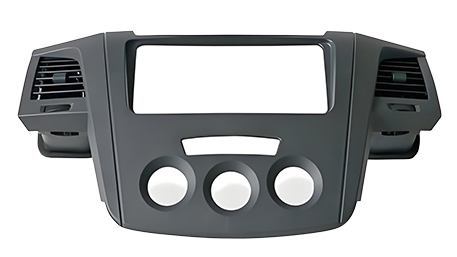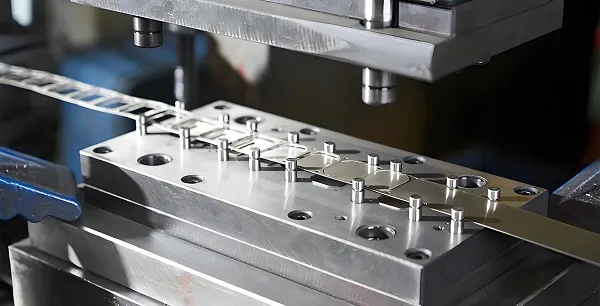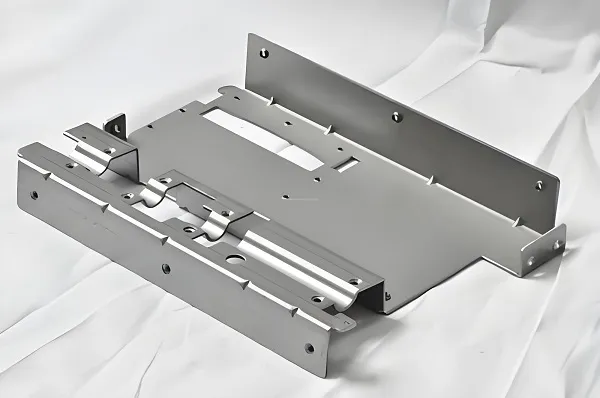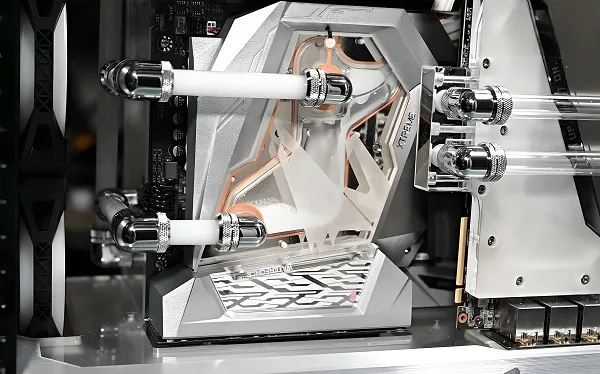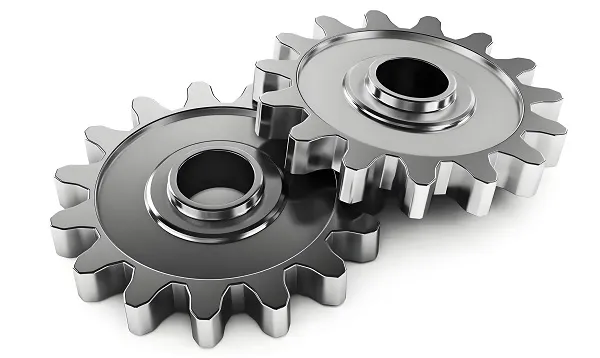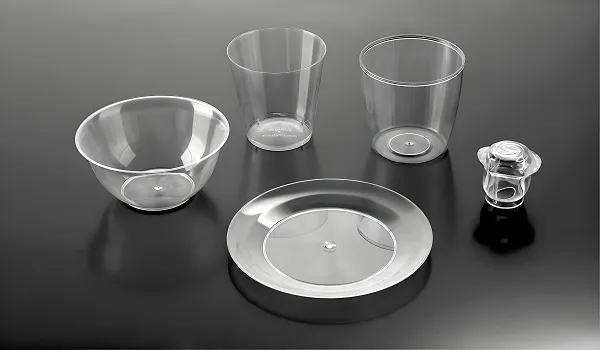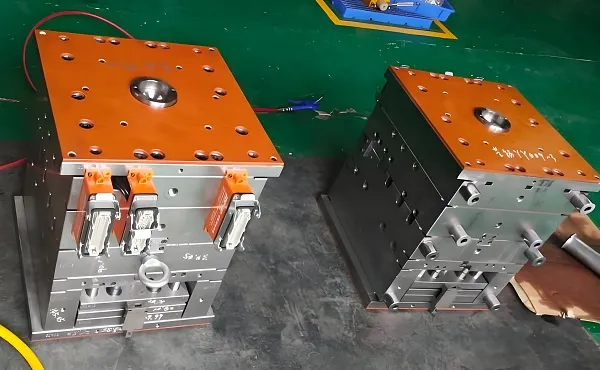Keywords: 3D Reverse Scanning, Hot Press Molding, Ergonomic Simulation
“I want a sci – fi dashboard cover with an LCD screen like in ‘Fast & Furious’. Can you make it?” – This is the most common demand from car – modification enthusiasts.
- Hand – held blue – light scanner (accuracy ±0.03mm) can obtain the contour of the original vehicle’s dashboard in 10 minutes and automatically generate a CAD model, not even missing the chamfer angle of the air – conditioning outlet.
- LiDAR surveys the entire vehicle’s center console to ensure that the gap between the modified part and the original vehicle is ≤0.5mm, eliminating the risk of abnormal noise.
- Embed an aluminum – alloy skeleton (thickness 1.2mm) inside the cover to support a 10.1 – inch touch screen, reducing weight by 40% compared to traditional plastic brackets.
- An e – sports – style cover with an active heat – dissipation air duct, equipped with 4 micro – fans (noise < 25dB), solves the problem of heat generation of high – power screens.
Case: The carbon – fiber dashboard cover customized for a Tesla Model 3 owner integrates an OLED vehicle condition display screen. It reads data through the CAN bus, increasing the tidiness by 200% compared to an external display.
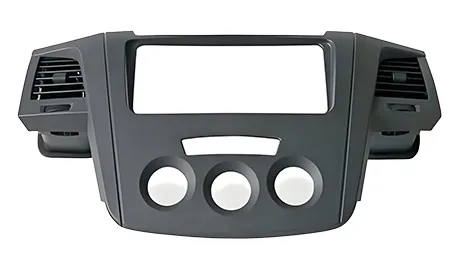
Keywords: IMD Film, Aviation Aluminum – Magnesium Alloy, Bio – based Plastic
“Will it deform in the summer sun? Will there be an odor when the heater is turned on in winter?” – Materials are the key to success.
| Material Type |
Feature Comparison |
Applicable Scenarios |
| ABS + PC Alloy |
Low cost (¥80/kg), easy to spray – paint, but prone to yellowing after long – term exposure to the sun |
Economical modifications |
| IMD Film |
Surface hardness of 3H, patterns never fade, and can create a three – dimensional tactile texture |
High – end brand original – style replicas |
| Forged Carbon Fiber |
Tensile strength of 700MPa, thickness can reach 2mm, but the cost is as high as ¥1500/kg |
Supercar racing style |
| Polylactic Acid (PLA) |
Biodegradable material, carbon emissions 60% lower than ABS, but heat – resistant only up to 80°C |
Environment – friendly theme modifications |
Pitfall Warning: A car owner customized a dashboard cover with acrylic, and the screen sank due to softening at high temperatures in summer. Be sure to choose materials with a heat – resistance of > 100°C!
- Demand Confirmation: Determine whether it is an “original – factory upgrade” or a “cyber – punk style”
- Structural Design: Use CATIA to analyze the load – bearing capacity of the cover (a ribbed design is required for a ≥5kg display screen)
- Mold Development: Five – axis precision – carved aluminum mold (starting from ¥30,000) or silicone replication mold (¥5000, suitable for small – batch production)
- Trial – fitting Verification: Road – test the 3D – printed trial – fitting part for 2000 kilometers to detect the probability of abnormal noise under bumpy road conditions
- Mass – production Quality Inspection: Randomly select 3 pieces from each batch and conduct a 72 – hour cyclic test in an environmental chamber at – 30°C ~ 110°C
Lesson Learned: A factory skipped the environmental test and directly shipped the products. As a result, the covers cracked in winter for northern customers, and the factory had to pay 300,000 yuan in compensation!
- 2000 – ton hot press: Permanently combines the IMD film with the substrate at 165°C/50MPa pressure, with a finished – product yield rate of 99.7%
- Six – axis laser engraving machine: Carves a 0.1mm – deep track pattern on the carbon – fiber surface, 20 times faster than manual polishing
- Dust – free spray – painting workshop: Equipped with a constant – temperature and – humidity system (temperature 23 ± 2°C, humidity 50% ± 5%) to ensure a dust – free paint surface
Industry Truth: 90% of “carbon – fiber” dashboard covers are actually water – transferred imitation patterns. Burn it with a lighter, and genuine carbon fiber won’t blister!
- Anti – aging Test: Simulate 5 – year sunlight exposure in a xenon – lamp aging machine (equivalent to 10 years of real – world use), with a color difference ΔE ≤ 1.5
- Volatile Substance Detection: VOC emissions < 50μg/m³ (the national standard requires < 200μg/m³), ensuring a safe ride for pregnant women and children
- Structural Strength: Use a 50 – kg counterweight to simulate human impact during emergency braking, with a cover deformation of ≤ 0.3mm
Data Speaks: The dashboard covers we supply to Porsche modification shops have passed 100,000 glove – box opening and closing tests in the German TÜV laboratory (far exceeding the industry standard of 50,000 times).
- Nano – injection molding: Directly inject and coat TPU soft rubber on the aluminum – alloy skeleton, eliminating the risk of delamination in traditional gluing processes
- Magnetron Sputtering Coating: Deposit a mobile – phone – grade AG anti – glare film layer, reducing the reflectivity from 8% to 3%, making night driving safer
- Olfactory Customization: Add micro – capsule perfume to the ABS raw material, and a light touch on the surface will release a delicate woody fragrance (lasting for more than 3 years)
Cutting – edge Technology Alert: The “tactile temperature – changing coating” under trial can reveal hidden patterns in the contact area when a finger swipes across the cover surface!
Price Composition Example (Forged Carbon Fiber + OLED Screen Integrated Version)
| Project |
Proportion |
Detailed Description |
| Materials |
35% |
2K carbon fabric + OLED screen + control module |
| Mold |
20% |
Five – axis CNC processing cost |
| Labor |
15% |
Technician’s hourly wage is ¥150, and it takes 16 hours |
| Inspection |
10% |
Electromagnetic compatibility + high – and low – temperature cycle tests |
| Profit |
20% |
|
Cost – saving Tips:
- Choose the water – transfer printing imitation carbon – fiber process, and the cost can be reduced by 80% directly.
- Order more than 5 pieces in a group, and the unit price can be reduced by 40% after sharing the mold cost.
Personalization Option Menu:
- Basic Version (+¥0): 10 standard colors available, delivered in 7 days
- Advanced Version (+¥800): Laser – engrave signature / team logo
- Flagship Version (+¥3500):
- Touch – sensitive ambient light (changes color with vehicle speed)
- Wireless charging module (supports 15W fast charging)
- Voice assistant wake – up button (compatible with Siri / Xiaoai Tongxue)
Immersive Experience: Preview the installation effect through AR glasses, and adjust 20 parameters such as the air – outlet angle and screen tilt.
- Q1: Will modifying the dashboard cover affect the deployment of the airbag?
- The airbag deployment area (usually marked as AIRBAG) must be avoided.
- Our design will reserve an airbag blasting guide groove to ensure that the deployment path is the same as the original factory.
- Q2: Can it be compatible with the original vehicle’s on – board computer display?
- Three solutions are supported:
- Retain the original screen (leave a window when the cover is molded).
- Transplant the original screen (the host model needs to be provided).
- Install an Android – system secondary screen (recommend the version with the Snapdragon 6125 chip).
- Q3: Will it crack in winter in the north?
- Use low – temperature modified PP materials (cold – resistant to – 40°C).
- In extreme regions, it is recommended to choose a carbon – fiber + Kevlar mixed – weave material (with a coefficient of thermal expansion close to that of steel).
- Q4: How to clean and maintain it?
- For suede – like materials: Use a neutral foam cleaner and a soft brush.
- For piano – Baking finish surfaces: Wax with a silica – containing coating agent once a month.
- For forged carbon fiber: No special maintenance is required. Avoid using corrosive solvents.
- Q5: What procedures are required to be legal on the road?
- In China:
- Do not block the speedometer / fault indicator light.
- Retain the original vehicle’s safety warning signs.
- In Europe and the US:
- In the EU, it needs to pass the E – Mark certification (light reflectivity test).
- In the US, it needs to comply with FMVSS 101 (control visibility standard).
In an era where even the steering wheel can be voice – controlled, the dashboard cover is no longer just a simple dust – cover. It is the car owner’s personal signature, the engineer’s micro – laboratory, and a witness to the evolution of the car from a tool to a companion. When you caress the exquisitely polished curves in the dead of night, you may feel that the best modifications are always a dialogue between the car and the owner born out of love.
